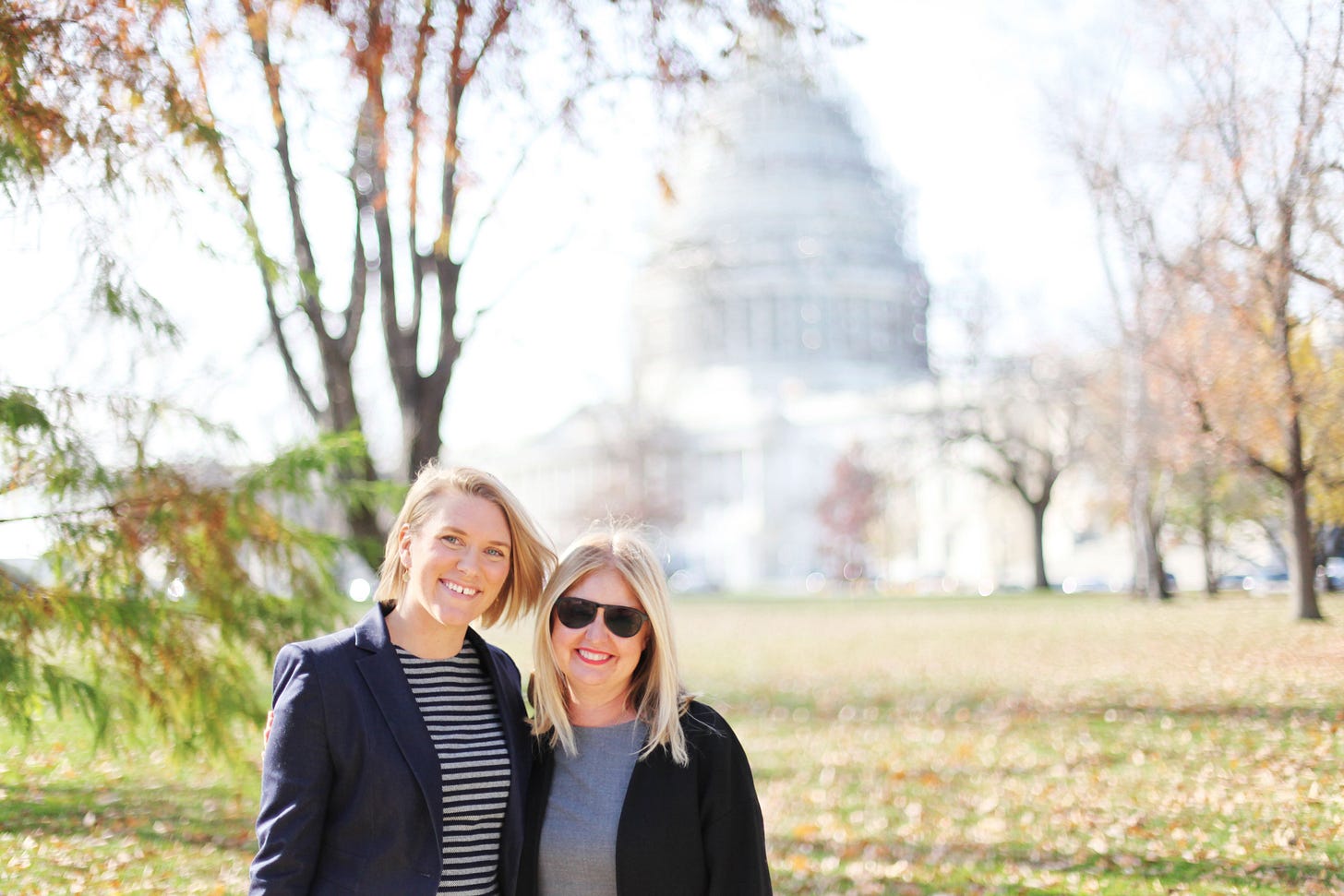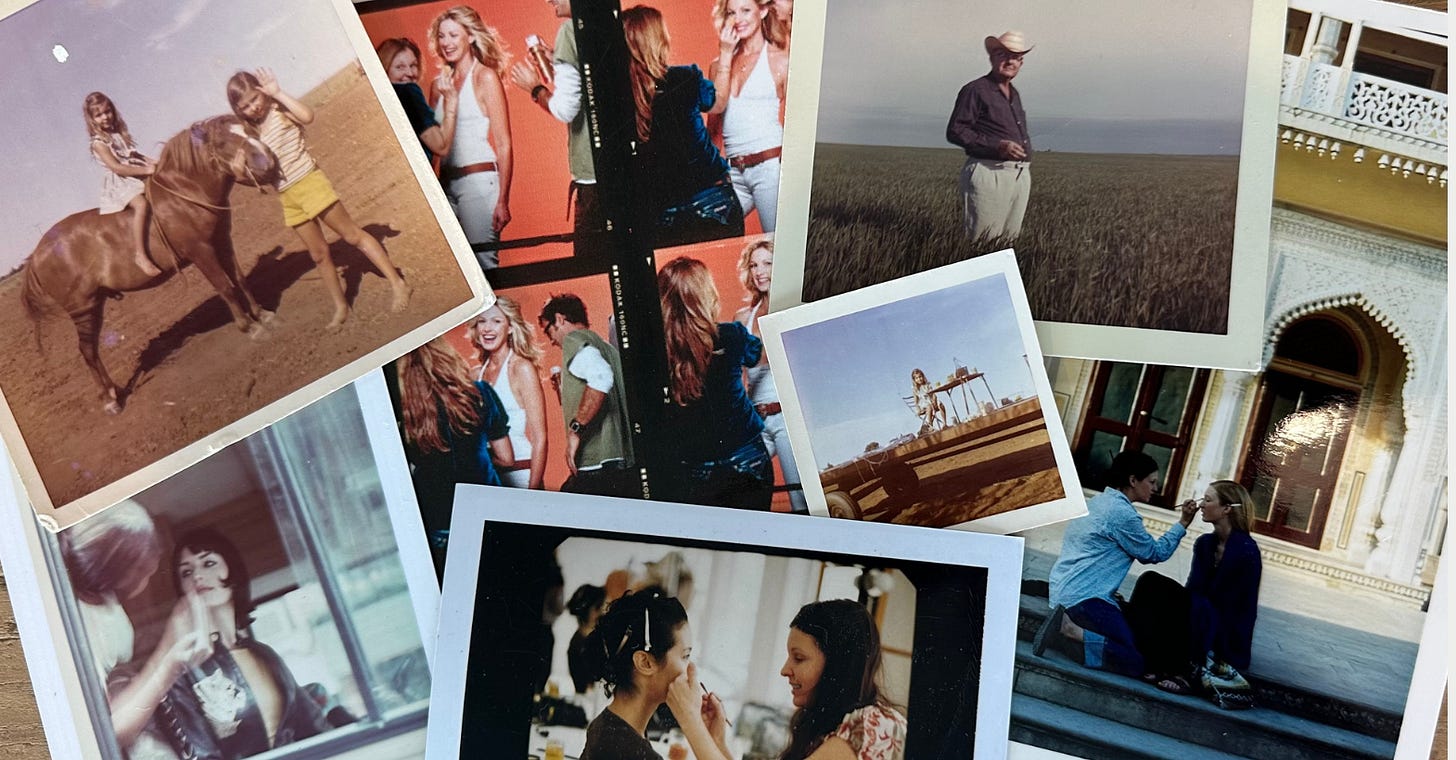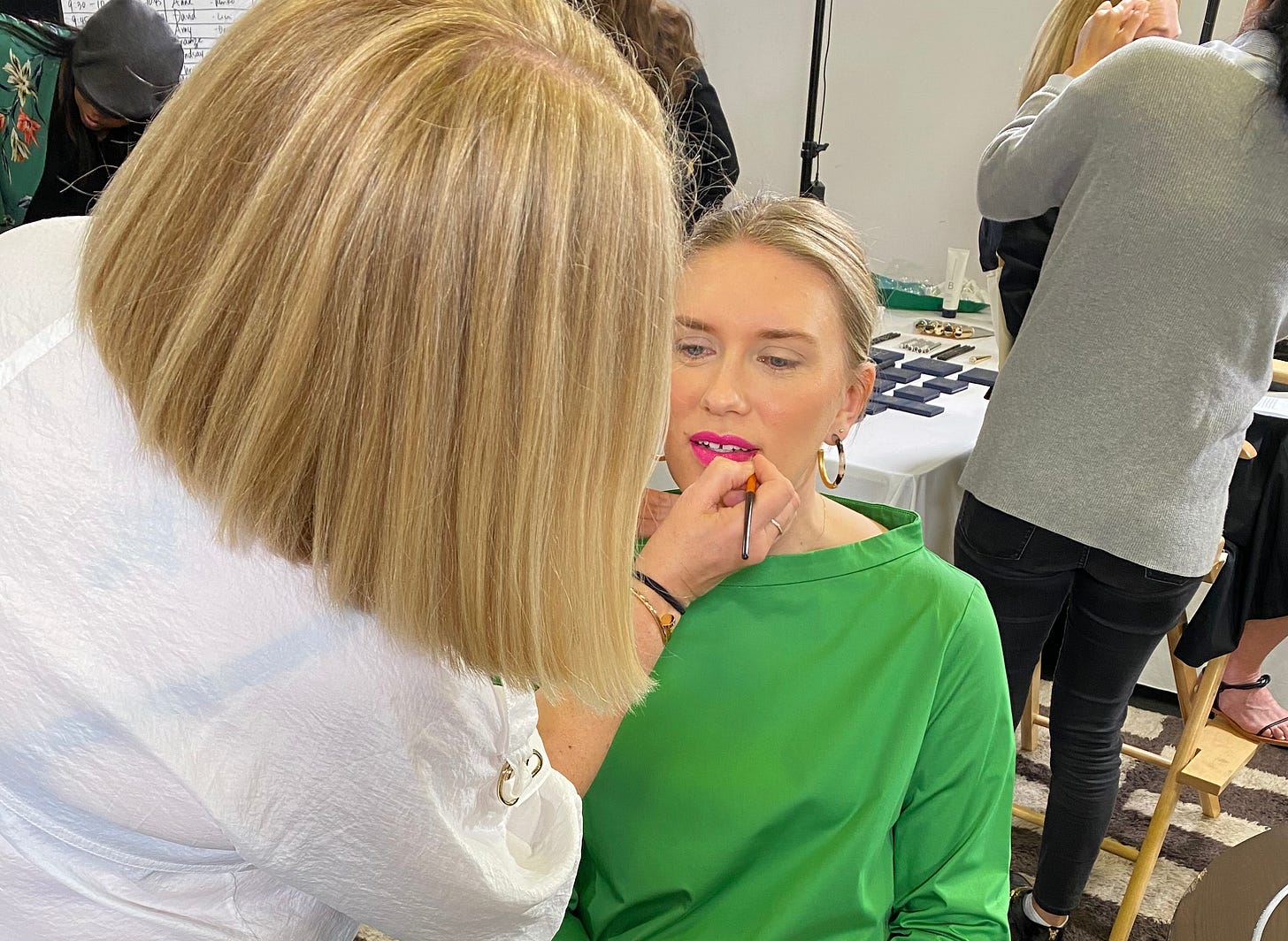What it's really like to formulate beauty products with safer ingredients, from a pioneer celebrity makeup artist
Exclusive interview with Christy Coleman, the makeup artist who taught me how to finally put on makeup at the age of 32...and formulate clean
When I made the transition from environmental health advocate to working inside the walls of a new clean beauty brand in LA, I knew next to nothing about makeup. How to put it on, how it was made, or the challenges of bringing products to the market without questionable ingredients.
In my book Cleaning House I bring readers along in my personal career, including this big pivot into the corporate world where I was quickly onboarded by colleagues like Christy Coleman, celebrity makeup artist and Mia Davis, who was the Head of Environment Health and Safety at Beautycounter. Both of these women gave me a quick onboarding to the challenges of making products that still worked the way we expect, without ingredients liked to safety concerns.
Simply put, it was much harder than I expected.
Today I wanted to share an exclusive interview with Christy Coleman, one of the industry’s most well-respected makeup artists and clean beauty pioneer. She was the woman who was my partner when we reformulated all of Beautycounter’s makeup after doing extensive human rights diligence of the mica supply chain (commonly linked to child labor). And then again when we removed talc from makeup and switched to cream formulas.
It’s important to note that a lot of product formulators are really just trying to get the product to market and don’t have the patience to get it right. Christy was always (and still is) the exception, she worked hard over many years to formulate, and then reformulate, complicated products from anti-aging creams to makeup that would stay put through a busy day.
I will forever be grateful for Christy’s work to help prove to the beauty industry—and consumers—that you don’t have to sacrifice product performance for your health and safety.
You were advocating for clean, sustainable beauty long before it became a trend—what first inspired you to take that path?
Christy:
I think I was born curious—always questioning the environment I lived in. I remember mosquito trucks spraying DDT down our cul-de-sac, and crop dusters swooping low over the cotton and wheat fields where I spent my summers in Oklahoma. Even then, something didn’t sit right.
In 2003, my father was diagnosed with ALS. I moved back to Texas to help care for him, and we spent two years side by side until he passed in 2005. During that time, he gave me one of the greatest gifts I’ve ever received. He said, “I wonder if I’d have this disease if I had questioned the chemicals around me—and thought more like you.” Those words stayed with me. They gave me permission—validation—to start thinking out loud.
Two years later, I found myself in California, honestly ready to throw my makeup kit into the ocean and find some way to cure ALS. Instead, I picked up a book—Not Just a Pretty Face by Stacy Malkan—and everything changed. It exposed the personal care industry and the harmful chemicals hiding in plain sight. I remember thinking: If I didn’t know this as a makeup artist, how was the rest of the world supposed to?
That book—and my father’s words—became the beginning of my path. This was never about a marketing angle—it was simply a question I couldn’t un-ask.
What kind of resistance or skepticism did you face early on, and how did you respond to it?
Christy:
I was met with a lot of resistance—mostly because I was new in town. I had just moved to Los Angeles from New York, where I was working primarily on fashion magazines and ad campaigns. At that time, New York was still mostly focused on models. But in LA, it was a different story. This was where the celebrity world lived and breathed, and I was suddenly this outsider with no track record in that scene. There was an immediate sense of distrust—not because of my work ethic, but because of the products I was using.
Clients often equate trust with the brands they recognize. And here I was, pulling out small-batch, mostly European formulas they’d never heard of. I actually had organic cotton bags made to hide the products inside, because they weren’t your usual Chanel shadows or Armani foundations. It was a learning curve for sure. I spent about a year studying and then just kept learning on the job. The products didn’t perform like the conventional ones, and there was a lot—and I mean a lot—of mixing involved to get the right texture and shades. It wasn’t easy. But I knew what I was building toward, even if no one else could see it yet.
Is your approach to beauty influenced by your broader worldview or lifestyle?
Christy:
Absolutely—a combination of both. Every country I’ve ever visited, I immediately seek out the nearest natural market, looking for an ingredient I haven’t yet discovered. There are so many beauty secrets embedded in different cultures, and to me, that’s the most exciting part of the work—this ongoing, global conversation around how we care for ourselves.
Can you walk us through what goes into formulating a truly clean and sustainable makeup product?
Christy:
It’s definitely not done alone—it takes a village. A strong internal safety and regulatory team is essential, as is real commitment from our contract manufacturing partners. It begins with an idea, a concept, and from there we create a product brief. That gets shared with our manufacturing partners, and the process begins.
Every ingredient is then meticulously reviewed by our internal safety and regulatory teams. Documentation is non-negotiable. Balancing performance with ingredient approval is where it becomes an art form—equal parts science, patience, and persistence.
How do you stay informed and ahead of the curve when it comes to safety & sustainability in the beauty industry?
Christy:
Challenge yourself—and the industry—to do better. Why wouldn’t you? Being on the front side of responsible sourcing and clean beauty should be the norm, not the exception. Align yourself with brands and people like yourself—those already doing the work and willing to lead real change. When we work collectively, we can do great things.
How has your definition of beauty evolved over the course of your career?
Christy:
I’m not sure it’s changed all that much. No matter the trends, for me, it’s always been—and will always be—skin first. That’s my esthetician background coming through. I’ve always believed the products we use should be viewed through the lens of enhancement, not concealment. They’re here to support and reflect your beauty, not mask it. When you combine that philosophy with clean formulation, there’s really no way you can’t see yourself as anything but spectacular.





Thank you Christy for this conversation. I love working with you.
A walk down memory lane! You two were always a fantastic duo.